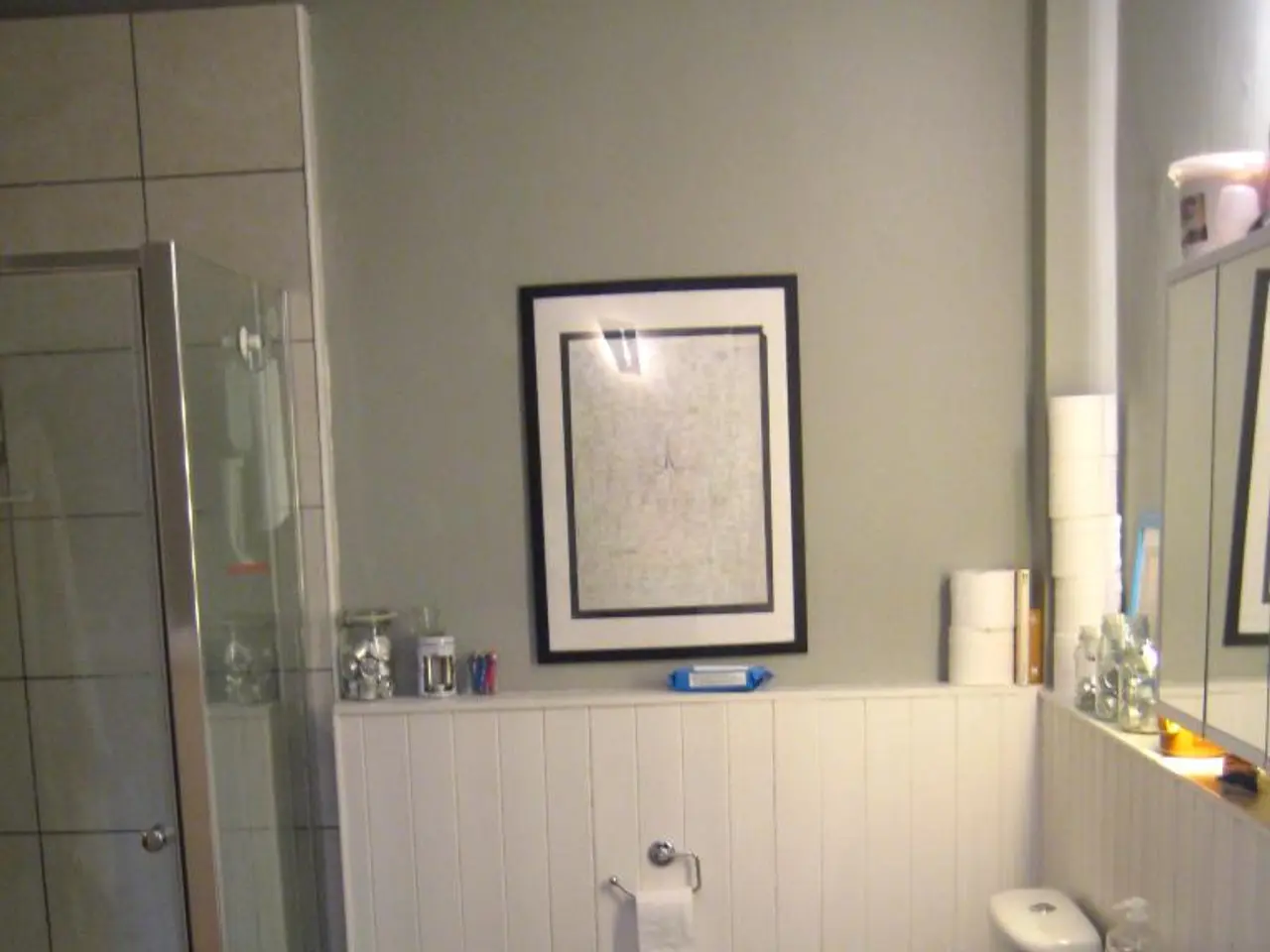Designers of bathrooms discuss which option is more suitable for a household between a wet room and a walk-in shower.
In the realm of bathroom renovations, two popular choices stand out: wet rooms and walk-in showers. Each offers distinct advantages and disadvantages, making them suitable for different bathroom layouts, lifestyles, and budgets.
Wet rooms, the epitome of modern bathroom design, are fully waterproofed, open-plan spaces where the shower area is integrated seamlessly with the rest of the floor. This barrier-free design provides a sleek, contemporary aesthetic, easy cleaning, enhanced accessibility—ideal for people with mobility issues—and flexibility in space utilization. However, wet rooms tend to be more expensive to install due to the extensive waterproofing of floors and walls, careful drainage planning, and critical ventilation requirements to prevent moisture buildup.
On the other hand, walk-in showers feature a dedicated shower area, usually with a glass partition but no door, making entry easy. They offer ease of cleaning due to fewer corners and doors, good accessibility for people with mobility challenges, and design flexibility. Walk-in showers are generally less costly than full wet rooms but more expensive than traditional shower stalls due to materials and drainage systems. However, they may present privacy concerns due to their open design, and there is a risk of water splashing beyond the shower space if not properly drained or enclosed.
For elderly or disabled users, wet rooms provide maximum accessibility and safety due to their level, barrier-free floors and waterproof design, while walk-in showers offer safer options than traditional tubs but may not be as seamless as wet rooms. For families or multi-occupant homes, walk-in showers with privacy solutions may work better than completely open wet rooms. For those valuing aesthetics and ease of cleaning, wet rooms deliver a streamlined look, though walk-in showers also offer contemporary styles with less complexity.
Regarding budgets, wet rooms usually incur higher upfront costs due to extensive waterproofing and drainage work. Walk-in showers generally cost less to install but can be pricier than standard stall showers due to specialized glass and drainage. Both options may have higher maintenance costs than conventional showers, depending on design and ventilation quality.
For bathroom layouts, wet rooms are especially suited to small, awkward, or ensuite bathrooms where space optimization and accessibility are priorities. Walk-in showers fit well in both compact and larger layouts but require thoughtful design to minimize water spillage and ensure privacy.
In summary, wet rooms offer seamless, highly accessible, and stylish bathrooms at higher installation costs and require excellent waterproofing and drainage. Walk-in showers provide a middle ground with improved accessibility, moderate cost, and privacy challenges that can be addressed by design choices. The best choice depends on the specific bathroom layout, household needs, and budget considerations.
Shamila Iqbal, co-founder and director at Bathroom Mountain, an online retailer offering a complete range of bathroom essentials, shares her insights, "Wet rooms are open-plan spaces with ground-level drainage, creating a seamless flow between the shower area and the rest of the bathroom."
Nancy Emery, a bathroom design expert at Drench, with 17 years of experience in the lifestyle sector, adds, "A walk-in shower has a more defined space, usually with one or two glass screens and a shower tray, creating a clear distinction between wet and dry areas."
Sally Bettison, Design Manager at Tissino, with a background in fashion technology and quality control, emphasizes the importance of choosing the right materials, "Tiles with a slip rating of at least R10 are essential for wet rooms to ensure safety when wet, but this can make cleaning a little bit more difficult compared to a shower tray."
For those seeking a sleek, minimalist, and contemporary look, the Cassien range of wet room screen kits offers a seamless, tailored finish, available with a choice of a wall arm or ceiling arm. The Jaquar wet room frame features a protective finish that resists soap scum and grime, making cleaning easier.
Ultimately, the decision between a wet room and a walk-in shower comes down to personal preference, budget, and the unique needs of your bathroom.
- Wet rooms integrate the shower area into the rest of the floor, offering a sleek, contemporary aesthetic and easy cleaning for a modern bathroom design.
- Walk-in showers feature fewer corners and doors, providing good accessibility for people with mobility challenges and flexibility in design.
- Wet rooms are often more expensive to install due to extensive waterproofing of floors and walls, careful drainage planning, and ventilation requirements.
- Walk-in showers are generally less costly but may cost more than traditional shower stalls due to materials and drainage systems.
- Wet rooms provide maximum accessibility and safety for elderly or disabled users with their level, barrier-free floors and waterproof design.
- Walk-in showers, while not as seamless as wet rooms, offer safer options than traditional tubs for people with mobility issues.
- For households that value aesthetics and ease of cleaning, wet rooms deliver a streamlined look, while walk-in showers also offer contemporary styles with less complexity.
- Wet rooms are best suited for small, awkward, or ensuite bathrooms where space optimization and accessibility are priorities, while walk-in showers can fit well in both compact and larger layouts.




